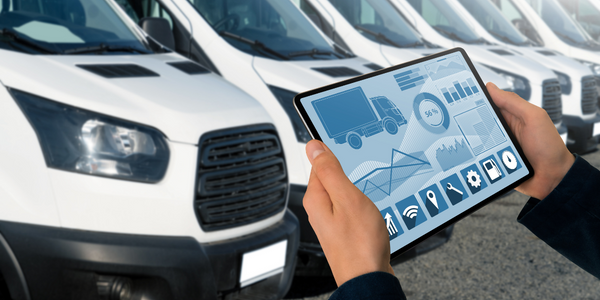Technology Category
- Platform as a Service (PaaS) - Application Development Platforms
Applicable Industries
- Paper & Pulp
- Transportation
Applicable Functions
- Logistics & Transportation
- Sales & Marketing
Use Cases
- Demand Planning & Forecasting
- Intelligent Packaging
Services
- Cloud Planning, Design & Implementation Services
About The Customer
Cloud Paper is a mission-driven start-up that produces bamboo toilet paper. The company was founded by Ryan Fritsch and Austin Watkins with the aim of preventing deforestation. Cloud Paper replaces traditional paper products with bamboo paper, a natural alternative that can grow up to three feet per day and can be harvested for paper in as little as three years, compared to 50-plus years for most trees. The company initially catered to corporate clients, including office parks, fitness franchises, and restaurant chains. However, the COVID-19 pandemic led to a shift in demand from offices and public spaces to homes, prompting Cloud Paper to transform its supply chain and business model to cater to this new consumer base.
The Challenge
Cloud Paper, a bamboo toilet paper company, had a successful business launch in 2019, supplying to corporate clients including office parks, fitness franchises, and restaurant chains. However, the COVID-19 pandemic in 2020 drastically changed the demand landscape. As stay-at-home orders were implemented, the demand for toilet paper shifted from offices and public spaces to homes. Traditional toilet paper manufacturers were struggling with container shortages and the urgency of quick shipping. Amid this chaos, Cloud Paper saw a surge in demand for its tree-free toilet paper, delivered in bulk on a regular schedule. The company had to transform its entire supply chain and business model in a matter of days to cater to this new consumer base. The challenge was to maintain supply chain agility, logistical transparency, and commitment to carbon neutrality while dealing with a 600% increase in sales in just two weeks.
The Solution
Cloud Paper, in partnership with Flexport, was able to respond swiftly to the sudden surge in demand. Flexport's strategic expertise helped Cloud Paper manage a series of orders that were larger than all previous orders in the company's history. The company also worked out an internal plan to remain transparent with their customers, a core value that was easy to uphold with data from Flexport’s platform. As delivery fees increased by 160% due to COVID-related delays in container pick-ups and returns, Flexport advised on optimizing internal operations and coordinated with the trucking company to expedite container movement. As a result, Cloud Paper was able to reduce delivery-related fees by 13% compared to before the spike. Flexport’s digital platform, customer service, and partnership with Carbonfund.org provided Cloud Paper with the necessary tools to navigate the challenges and pivot their business model swiftly.
Operational Impact
Quantitative Benefit

Case Study missing?
Start adding your own!
Register with your work email and create a new case study profile for your business.
Related Case Studies.

Case Study
Airport SCADA Systems Improve Service Levels
Modern airports are one of the busiest environments on Earth and rely on process automation equipment to ensure service operators achieve their KPIs. Increasingly airport SCADA systems are being used to control all aspects of the operation and associated facilities. This is because unplanned system downtime can cost dearly, both in terms of reduced revenues and the associated loss of customer satisfaction due to inevitable travel inconvenience and disruption.

Case Study
IoT-based Fleet Intelligence Innovation
Speed to market is precious for DRVR, a rapidly growing start-up company. With a business model dependent on reliable mobile data, managers were spending their lives trying to negotiate data roaming deals with mobile network operators in different countries. And, even then, service quality was a constant concern.

Case Study
Digitize Railway with Deutsche Bahn
To reduce maintenance costs and delay-causing failures for Deutsche Bahn. They need manual measurements by a position measurement system based on custom-made MEMS sensor clusters, which allow autonomous and continuous monitoring with wireless data transmission and long battery. They were looking for data pre-processing solution in the sensor and machine learning algorithms in the cloud so as to detect critical wear.

Case Study
Cold Chain Transportation and Refrigerated Fleet Management System
1) Create a digital connected transportation solution to retrofit cold chain trailers with real-time tracking and controls. 2) Prevent multi-million dollar losses due to theft or spoilage. 3) Deliver a digital chain-of-custody solution for door to door load monitoring and security. 4) Provide a trusted multi-fleet solution in a single application with granular data and access controls.

Case Study
Vehicle Fleet Analytics
Organizations frequently implement a maintenance strategy for their fleets of vehicles using a combination of time and usage based maintenance schedules. While effective as a whole, time and usage based schedules do not take into account driving patterns, environmental factors, and sensors currently deployed within the vehicle measuring crank voltage, ignition voltage, and acceleration, all of which have a significant influence on the overall health of the vehicle.In a typical fleet, a large percentage of road calls are related to electrical failure, with battery failure being a common cause. Battery failures result in unmet service agreement levels and costly re-adjustment of scheduled to provide replacement vehicles. To reduce the impact of unplanned maintenance, the transportation logistics company was interested in a trial of C3 Vehicle Fleet Analytics.

Case Study
3M Gains Real-Time Insight with Cloud Solution
The company has a long track record of innovative technology solutions. For example, 3M helps its customers optimize parking operations by automating fee collection and other processes. To improve support for this rapidly expanding segment, 3M needed to automate its own data collection and reporting. The company had recently purchased the assets of parking, tolling, and automatic license plate reader businesses, and required better insight into these acquisitions. Chad Reed, Global Business Manager for 3M Parking Systems, says, “With thousands of installations across the world, we couldn’t keep track of our software and hardware deployments, which made it difficult to understand our market penetration.” 3M wanted a tracking application that sales staff could use to get real-time information about the type and location of 3M products in parking lots and garages. So that it could be used on-site with potential customers, the solution would have to provide access to data anytime, anywhere, and from an array of mobile devices. Jason Fox, Mobile Application Architect at 3M, upped the ante by volunteering to deliver the new app in one weekend. For Fox and his team, these requirements meant turning to the cloud instead of an on-premises datacenter. “My first thought was to go directly to the cloud because we needed to provide access not only to our salespeople, but to resellers who didn’t have access to our internal network,” says Fox. “The cloud just seemed like a logical choice.”







